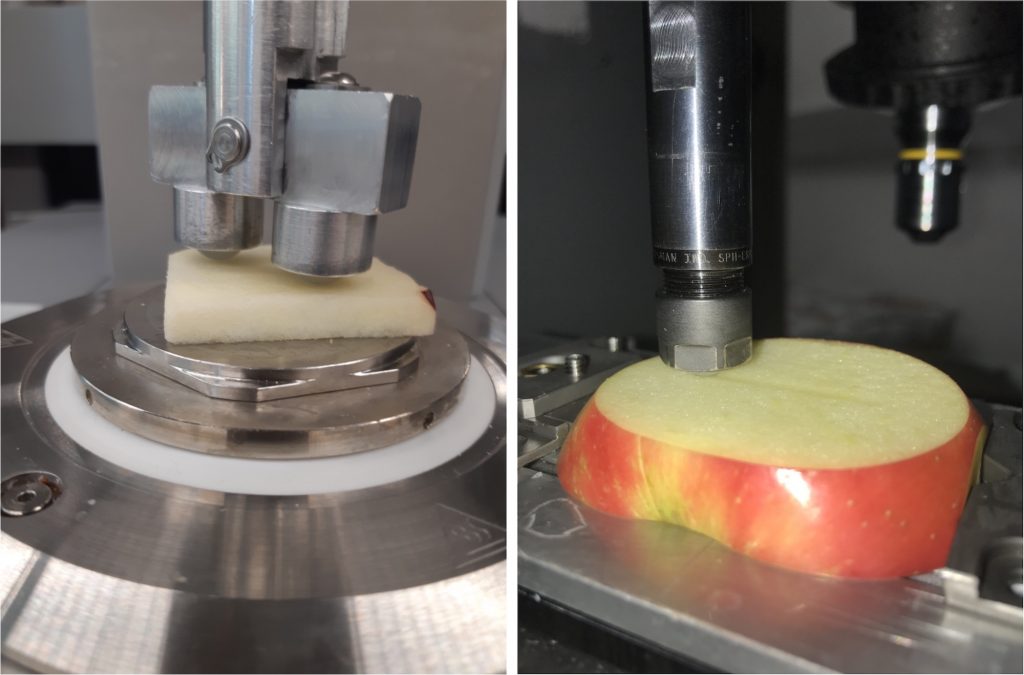
Features
Research
Fruit
Breakthroughs in measuring apple texture
A collaboration among researchers resulted in a more effective way to measure apple texture that performs the same as a trained sensory panel while outperforming a penetrometer.
August 6, 2020 By Fruit and Vegetable
 Left to right: a rotational double ball-on-plate tribological system and linear reciprocating tribometer. Photo courtesy of Vineland Research Innovation Centre.
Left to right: a rotational double ball-on-plate tribological system and linear reciprocating tribometer. Photo courtesy of Vineland Research Innovation Centre. For the first time, Vineland Research Innovation Centre’s (Vineland) consumer insights team is able to demonstrate how critical sensory attributes – taste, texture – can be predicted using friction measurements of apple flesh.
“Tribology, the science of wear, friction and lubrication is being used more and more in food science but mostly in liquids and semi-solids including yogurt and custard,” said Alexandra Grygorczyk, a research scientist in sensory and consumer services at Vineland. “Until now tribology hasn’t been used on hard foods.”
Tribology can help decipher the texture of food, or be used to describe differences in “friction-related texture attributes” like astringency, fatty mouthcoating, and grittiness.
To help the Canadian apple industry remain competitive, Vineland in collaboration with the University of Idaho and the University of California Merced in the United States and the University of Guelph in Canada, undertook a novel study using tribology on this fruit.
“We found tribology was able to predict crispness, juiciness and mealiness – the most important texture features for consumers when eating an apple. Interestingly, we determined tribology is more effective than the industry standard penetrometer, for measuring apple firmness. Friction measurements using tribology equipment not only predicted apple crispness, which is related to firmness, but also mealiness and juiciness which the penetrometer is not able to predict reliably,” explained Grygorczyk.
“We found tribology was able to predict crispness, juiciness and mealiness – the most important texture features for consumers when eating an apple.”
The research team then repeated the study, this time using an attachment on a texture analyzer, an instrument widely available within the horticulture industry. Findings showed with simple and fairly inexpensive modifications, a texture analyzer can be used to produce friction measurements strongly associated with texture perception by a trained sensory panel while outperforming a penetrometer.
“If positive results continue this coming apple season, we anticipate recommending a switch from using a penetrometer to using tribology for monitoring apple texture along the value chain,” concluded Grygorczyk.
Study findings have been published in Food Quality and Preference and can be accessed at a cost. Those interested in more information can contact Alexandra Grygorczyk directly through email or by phone, 905-562-0320 x672.
Print this page